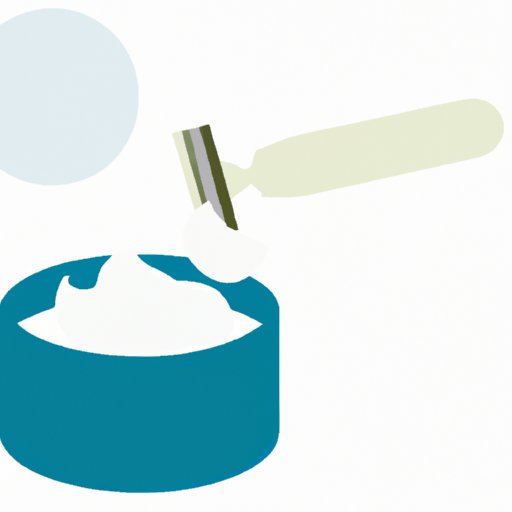Introduction
Razor burn is a common skin condition that can cause redness, itching, and irritation in the affected area. It usually occurs after shaving, waxing, or plucking hair and can be uncomfortable and even painful. Although it’s not dangerous, it can be annoying and make you feel self-conscious about your appearance. Fortunately, there are steps you can take to both prevent and treat razor burn.
What is Razor Burn?
Razor burn is a skin irritation caused by friction from shaving, waxing, or plucking. It typically appears as redness, bumps, and/or itching in the affected area. It can also cause a burning sensation. Razor burn is most likely to occur on areas of the body with thin, sensitive skin, such as the face, neck, armpits, and bikini line.
Reasons for Razor Burn
There are several factors that can contribute to razor burn. These include using a dull razor blade, shaving too often or too closely, using harsh products, and not taking proper care of your skin before and after shaving. Other causes include dry skin, poor technique, and using the wrong kind of razor.
Prevention
The best way to avoid razor burn is to take steps to prevent it. Here are some tips to help you keep your skin smooth and irritation-free:
Use a Mild, Moisturizing Shaving Cream or Gel
Shaving creams and gels are essential for preventing razor burn. Look for a product that is designed specifically for sensitive skin and contains moisturizing ingredients such as aloe vera, glycerin, or shea butter. Avoid products with alcohol or menthol, which can be irritating.
Exfoliate Skin with a Gentle Scrub
Exfoliating your skin before shaving will help remove any dead skin cells and unclog pores, which can help reduce irritation. Use a gentle scrub that is specifically designed for sensitive skin. Avoid scrubs with harsh ingredients such as walnut shells or apricot kernels.
Change Razor Blade Regularly
Make sure you change the blade on your razor regularly. A dull blade can cause more irritation than a sharp one and can increase your risk of cuts and nicks. To ensure a close, comfortable shave, replace your blade every five to seven shaves.
Shave in Direction of Hair Growth
Shaving against the grain can cause razor burn. To minimize irritation, always shave in the direction your hair grows. This will help reduce friction and give you a smoother, closer shave.
Treatment
If you do get razor burn, there are a few things you can do to help soothe the irritation. Here are some tips:
Rinse with Cold Water after Shaving
Rinsing the affected area with cold water can help reduce the redness and swelling associated with razor burn. The cold water will also help close the pores and reduce the risk of infection.
Apply an Aloe-Based Moisturizer or Hydrocortisone Cream
Using an aloe-based moisturizer can help soothe the skin and reduce inflammation. You can also try using a hydrocortisone cream, which can provide relief from itching and irritation. Be sure to use a product that is specifically designed for sensitive skin.
Avoid Using Alcohol-Based Aftershaves
Aftershaves that contain alcohol can be very drying and can worsen razor burn. Instead, look for a product that contains natural oils and moisturizers to help replenish the skin’s moisture.
Conclusion
Razor burn can be an uncomfortable and even painful experience. Fortunately, there are steps you can take to both prevent and treat it. Start by using a mild, moisturizing shaving cream or gel, exfoliating your skin with a gentle scrub, and changing razor blades regularly. When treating razor burn, rinse the affected area with cold water and apply an aloe-based moisturizer or hydrocortisone cream. Avoid using alcohol-based aftershaves, as they can be drying and can worsen razor burn.


